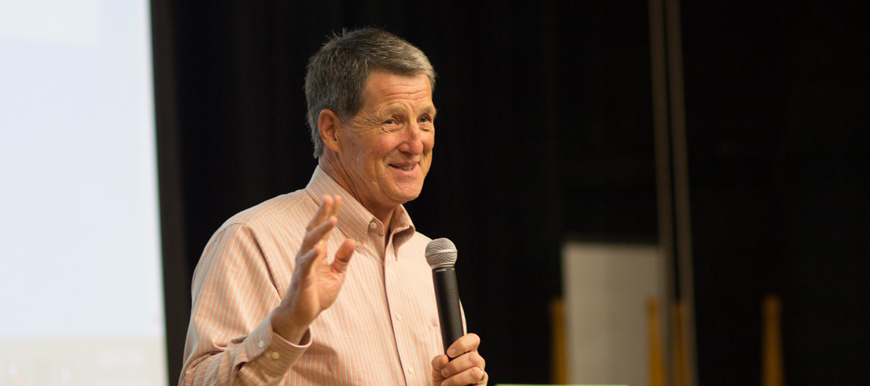Logan City and USU build bridges
Landlord relations, noise ordinances, vehicle and pedestrian traffic and the Concrete Jungle were several topics explored at the USU Neighborhood Meeting on Wednesday night.
Students and officials of Logan City met in the Taggart Student Center auditorium to discuss concerns and share ideas.
More than 50 students were in attendance, some of whom voiced their opinions off-location via Twitter using #USUNeighborhood. Logan Mayor H. Craig Petersen, members of the Logan Municipal Council, the city police department and representatives from other city entities introduced themselves and answered students’ questions.
Casey Saxton, student advocate vice president and chair of the Government Relations Council, said there was a push for increased student attendance this year.
“I would’ve hoped for more students to come,” he said. “We talked about some important issues, but overall, I was pleased.”
Students were prompted all week to tweet questions for city officials. A live feed was also displayed in the auditorium, something Saxton said was unique to this year.
“We haven’t done that for the last two,” he said. “We wanted to this meeting because a lot of USU students use Twitter, and it’s easier for them to chime in and share their real feelings.”
Tyler Robinson, a junior majoring in mechanical engineering, addressed the fate of the Concrete Jungle, a structure in Logan Canyon recently closed to the public due to graffiti. Mayor Petersen was adamant that it will not be opened to the public or allowed as a creative space.
Casey Saxton said he was not satisfied with the mayor’s response.
“I was disappointed in the way that they handled the question about the Concrete Jungle,” he said. “I think it’s a very valid point; why not turn it into art? If people do it anyway, and it’s vandalism, why not turn it into art?”
Petersen also discussed the new Community Bridge Initiative, which would involve students in solving city problems in their course work. Five courses will be introduced spring semester where students, as a work study, will explore solutions to city issues such as air quality.
“The students who take those courses will then spend their time developing their expertise to identify city problems,” he said. “This isn’t just an academic exercise. We’re anticipating that we’ll have real answers and real ideas and real data, and we’ll be able to address some very real problems.”
James Olson, city liaison to the Neighborhood Council, said bridging the cooperation gap between the city and the university is a work in progress; these annual meetings act as an aid to that.
“This isn’t the city coming and doing their dog and pony show,” he said. “This is us responding to requests from students. … It shows that there’s a level of commitment to Utah State students; we want them to be part of our community. It’s been too long that they haven’t been vocal enough. Well, let’s give the best opportunity for them to be vocal.”
Additional student questions and city responses will be published on the city website for the public.
— manda.perkins@hotmail.com
Twitter: @perkins_manda

